
We are celebrating 15 years — and counting — of stories that are deeply researched and deeply felt, that build a historical record of what the city has been.
We are celebrating 15 years — and counting — of stories that are deeply researched and deeply felt, that build a historical record of what the city has been.
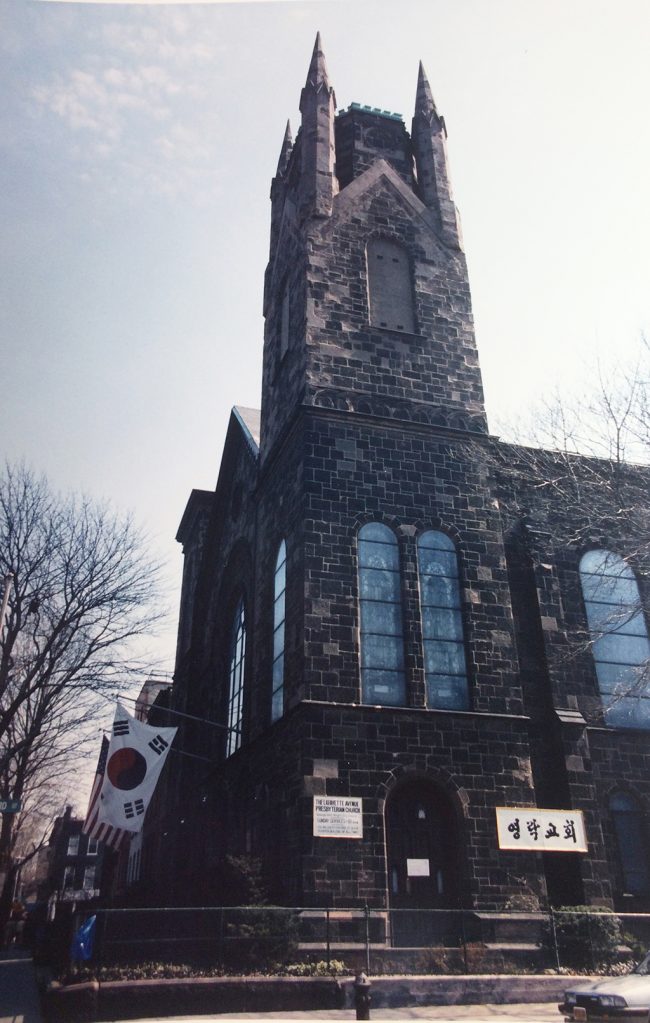
Lafayette Avenue Presbyterian Church, in Fort Greene, in the late 1980s | Photo courtesy of Young Nak Presbyterian Church
What do Nathan’s Famous Hot Dogs, the U.S.S. Missouri, and Korean Presbyterianism have in common?
They all came from Brooklyn.
The first Brooklyn lifestyle brand was Protestant piousness — this was “the city of churches” and the home of preacher Henry Ward Beecher — particularly in contrast to the congested and disreputable Manhattan Island.
Around that time, in 1885, a young Brooklynite and NYU graduate named Horace Grant Underwood arrived in Korea as the first recognized Presbyterian missionary. In Korea, his legacy is remarkable: he founded Yonsei University, the country’s most prestigious college, and translated the Bible into Korean vernacular. Today, Presbyterianism is the most populous branch of Christianity among South Korea’s 15 million Christians.
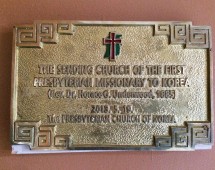
A plaque from the Presbyterian Church of Korea hangs in the Lafayette Avenue Presbyterian Church
All that has made Underwood’s Fort Greene church, Lafayette Avenue Presbyterian, a pilgrimage site for Korean coreligionists — a Korean cultural landmark in the midst of brownstone Brooklyn.
“They look at the Lafayette Avenue church as their shrine,” said Ed Moran, a member of the Brooklyn congregation and its unofficial historian. Recently, two busloads of Korean pastors came to visit the church, which features an Underwood chapel that commemorates the Korean mission. “It was like a paparazzi fiesta, the Korean equivalent of going to Lourdes, I imagine. They were literally jumping up on the pews to get a better view.”
Demographic change has diminished the Fort Greene congregation. It could no longer be called the “millionaires’ church,” as it was when Underwood — whose family was responsible for another Brooklyn export, the Underwood Typewriter — attended services here during the Gilded Age. But its Korean equivalent has prospered, constructing a modern church in downtown Seoul, and recently gave a gift to its Brooklyn cousin to help fund renovations. “You have to take care of your parents when they get old,” Moran said.
To continue that metaphor, the grandparents wound up taking care of the grandchildren. After the abolition of ethnic immigration quotas in 1965, the US Korean population boomed, more than tripling between 1980 and 2005. Greater New York overtook Greater Los Angeles as the largest regional Korean population outside the peninsula. In 2010, New York City’s Korean population nudged over 100,000.
In 1983, during the greatest growth spurt, a Korean pastor founded a New York branch of Korea’s largest Presbyterian congregation, Young Nak (Eternal Joy). For two years, the congregation occupied a temporary space in Elmhurst. In 1985, the pastor of Lafayette Avenue Presbyterian invited the group to worship in Fort Greene.
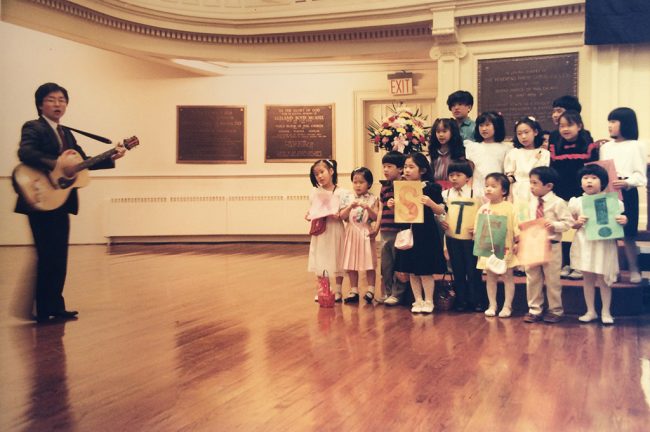
Youth choir of the Young Nak congregation in Fort Greene, late 1980s | Photo courtesy of Young Nak Presbyterian Church
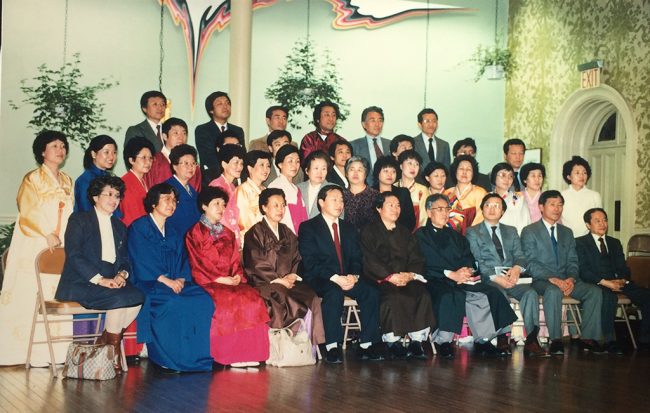
The Young Nak congregation meets in Fort Greene, late 1980s | Photo courtesy of Young Nak Presbyterian Church
For the next five years, the old brownstone church in what was then a largely black Brooklyn neighborhood welcomed the Korean congregation into the fold. Over the grand doorway, the South Korean flag flew alongside Old Glory. Koreans came to services in Brooklyn from New Jersey, Long Island, and Queens. “Here in the US, the church is their community center, it helps them settle.” said Paul Choe, the pastor of Young Nak. The Lafayette Avenue church had been very generous to its Korean guests, he added.
By the early ‘90s, Young Nak had grown enough to acquire its own church. The leaders purchased a brick-walled, A-frame church on 107th Street in Queens. The building, which dates from the 1960s, had been an African-American Baptist church — an institution of Black Corona, back when Louis Armstrong lived down the block.
For two decades, Young Nak thrived. But Choe says the congregation is shrinking now. Corona has become a mostly Hispanic neighborhood. Just as Corona’s black population moved fifty years ago to Jamaica, Southeast Queens, and the Long Island suburbs, Choe’s parishioners have moved to Bayside, Nassau County, and Fort Lee, New Jersey. The US Korean population has declined in recent years.
The congregation is thinking about moving closer to its parishioners, who — like generations of suburbanites who have maintained their connection to urban churches — drive in but have trouble parking. The building could be sold to a Hispanic congregation, Choe said, in another round of ecclesiastical musical chairs.
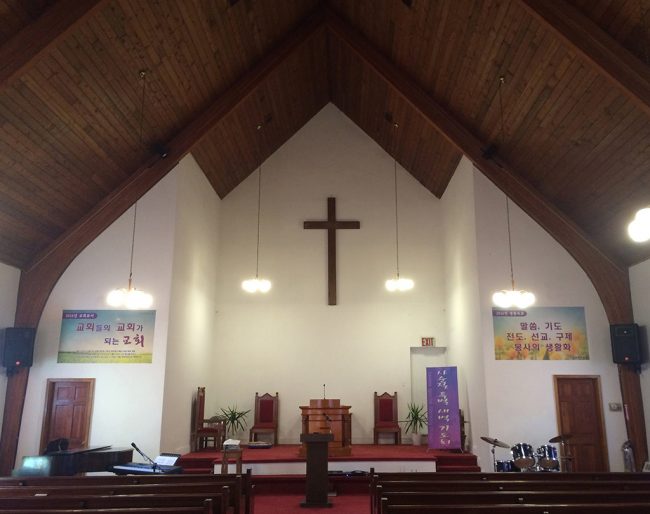
Young Nak occupies a church built for an African-American Baptist congregation. It may soon be home to a Hispanic church | Photo by Henry Grabar
As for Underwood himself, he too became a Brooklyn export of a kind. In 1999, his great-grandson had him exhumed and reburied in Seoul’s Yanghwajin Foreign Missionary Cemetery, alongside his son and grandson, who continued his work in Korea. In Fort Greene, he has a plaque; in Seoul, a statue.
The views expressed here are those of the authors only and do not reflect the position of The Architectural League of New York.